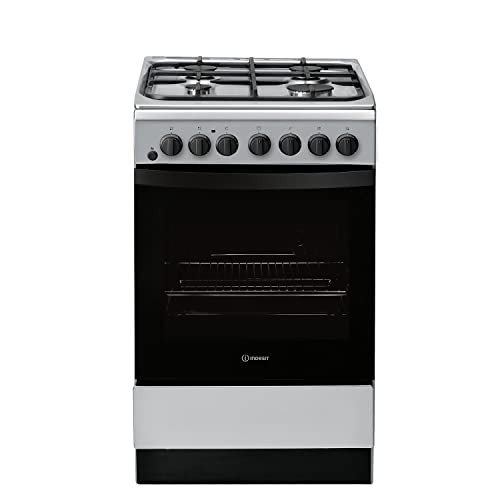Ovens And Hobs Tips From The Most Effective In The Industry
Understanding Ovens and Hobs: A Comprehensive Guide
Cooking has come a long method given that the days of open flames and basic cooking techniques. Today, ovens and hobs are at the heart of contemporary cooking areas, supplying versatility, performance, and an array of cooking options. Whether you are an amateur cook or a seasoned chef, understanding the distinctions, features, and functions of these devices is vital for maximizing cooking potential. This article breaks down the various kinds of ovens and hobs available on the marketplace, their performances, and how to choose the best appliances for your kitchen.
What is an Oven?
An oven is an enclosed area designed for heating and cooking food, offering numerous approaches such as baking, roasting, and broiling. Ovens come in different types, each serving distinct cooking preferences and requirements.
Types of Ovens
Traditional Ovens:
- Use gas or electricity for heating.
- Usually include a heating element at the top and bottom.
- Ideal for basic baking jobs.
Convection Ovens:
- Use a fan to circulate hot air, promoting even cooking.
- Appropriate for baking, roasting, and reheating.
- Reduces cooking time and enhances taste.
Steam Ovens:
- Utilize steam to prepare food while retaining wetness and nutrients.
- Exceptional for health-conscious cooking, such as vegetables and fish.
Microwave Ovens:
- Use electro-magnetic radiation to heat food rapidly.
- Best for reheating leftovers or cooking simple meals.
Wall Ovens:
- Built into the wall, saving area in the kitchen.
- Readily available in various configurations, consisting of single or double ovens.
Key Features of Ovens
- Temperature Control: Precision heating for various baking and preparing procedures.
- Self-Cleaning Options: Some designs have self-cleaning modes that utilize heats to burn food residue.
- Smart Features: Wi-Fi connectivity allows remote pre-heating, monitoring, and recipe management through smart devices.
What is a Hob?
A hob is a cooking surface, frequently described as a range or cooktop, where pots and pans is positioned for heating. Hobs are readily available in various materials, sizes, and heating approaches, dealing with diverse cooking requirements.
Kinds of Hobs
Gas Hobs:
- Utilize burner for direct flame cooking.
- Deal accurate temperature control and are preferred by numerous professional chefs.
Electric Hobs:
- Use electric coils or smooth tops.
- Some designs are equipped with induction innovation, offering fast heating through electro-magnetic energy.
Induction Hobs:
- Cookware must be made from magnetic products.
- Very energy-efficient, offering quick heat and decreasing burn risks.
Ceramic Hobs:
- Feature a glass-ceramic surface with heating aspects underneath.
- Easy to clean but can be less energy-efficient than induction hobs.
Secret Features of Hobs
- Burner Configuration: Varies from two to six burners, depending upon design and size.
- Power Levels: Multiple settings permit greater precision in cooking.
- Safety Features: Options like flame failure devices and kid lock settings guarantee safety during cooking.
Selecting the Right Oven and Hob
Choosing the right oven and hob for your kitchen includes cautious factor to consider of numerous factors. Below is a list of questions to guide your selection procedure:
- What is your main cooking style?
- How much kitchen area do you have?
- What is your budget plan?
- Do you choose gas or electric home appliances?
- Are additional features like wise connection crucial to you?
Table Summary of Key Differences Between Ovens and Hobs
Feature
Oven
Hob
Functions
Baking, roasting, broiling
Boiling, frying, sautéing
Cooking Method
Enclosed heat
Direct cooking surface
Temperature level Control
Adjustable settings
Range settings
Types
Electric, gas, convection, microwave
Gas, electric, induction, ceramic
Cooking Capacity
Larger (can prepare numerous dishes)
Smaller (concentrate on instant cooking)
Cleaning
Self-cleaning alternatives offered
Usually manual cleaning needed
Maintenance Tips for Ovens and Hobs
Correct care and upkeep of your cooking appliances extend their life expectancy and effectiveness. Here are important upkeep ideas:
Regular Cleaning:
- Clean the oven interior after each use to prevent residue buildup.
- Wipe down hob surface areas after cooking to prevent stains.
Inspect Seals:
- Ensure the oven door seals are intact to keep energy effectiveness.
- Change worn-out gaskets and seals as required.
Check Burners and Elements:
- For gas hobs, look for clogs in burners.
- For electric hobs, check coils and surface areas for signs of wear.
FAQs
Can I use any cookware on induction hobs?
- No, induction hobs just work with magnetic cookware, such as cast iron or stainless steel.
What is the most energy-efficient cooking appliance?
- Induction hobs are normally the most energy-efficient alternative, utilizing less energy than conventional gas or electric models.
How frequently should I clean my oven?
- It's a good idea to clean your oven every couple of months, or more often if you utilize it typically.
Can I install an oven and hob individually?
- Yes, both appliances can be installed individually based on kitchen style and area.
What should I think about when setting up a gas hob?
- Ensure correct ventilation and adhere to regional safety codes. Sales Ovens is a good idea to have an expert set up gas home appliances.
Comprehending the features, types, and maintenance of ovens and hobs can substantially improve your cooking experiences. Picking the ideal devices customized to your cooking design, kitchen area, and security requirements can make all the distinction in accomplishing cooking success. By being informed about your options, you can enjoy a more effective and satisfying cooking journey, bringing scrumptious meals to your table with ease.
